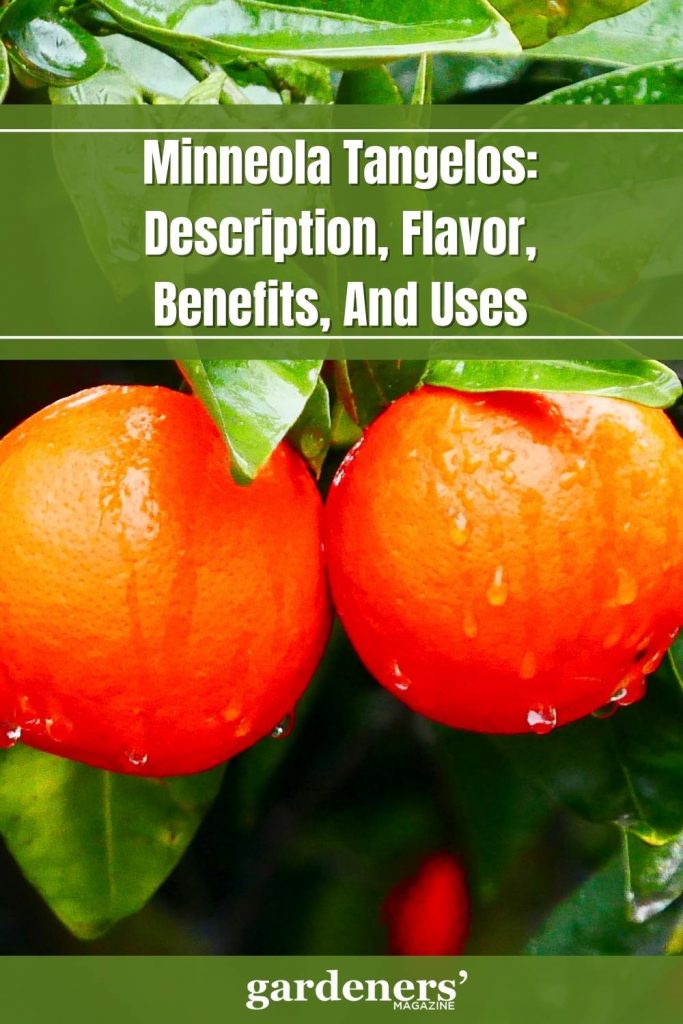Minneola tangelos, also known as the Honeybell orange, are a hybrid citrus fruit that is an offspring of a grapefruit and a tangerine. These tangy-sweet fruits are widely available in many parts of the world during the winter months and provide a unique addition to citrus dishes. Here, we’ll discuss everything you need to know about Minneola tangelos, from their nutritional benefits to how to prepare and store them.
What are Minneola Tangelos, and why are they so popular?
Minneola tangelos are a hybrid of the Dancy tangerine and Duncan grapefruit, creating an oddly shaped fruit with a bell-like appearance. The skin is bright orange and has a deep furrow at the stem end. It is slightly bumpy to the touch and easy to peel thanks to its thin, edible skin.
The flesh of the tangelo is typically bright orange and juicy, with a sweet-tart taste that some describe as “perfectly balanced” between tartness and sweetness. The fruit contains several seeds in its center, though they are usually not noticed when eating the fruit.

History and Origin of the Minneola Tangelos:
The Minneola tangelo was first discovered in 1931 in Lake County, Florida. It is thought to result from cross-pollination between a Dancy tangerine and a Duncan grapefruit tree. The fruit quickly became popular among citrus growers due to its high yields and sweet flavor, and today it is widely available in grocery stores throughout the U.S. and beyond.
Nutritional Benefits of Minneola Tangelos:
Minneola tangelos are a good dietary fiber, vitamin C, folate, and potassium source. They also contain small amounts of magnesium, phosphorus, iron, and other essential vitamins and minerals. Eating a Minneola tangelo is an excellent way to get your daily dose of essential nutrients while satisfying your sweet tooth.
Where are Minneola Tangelos grown and Harvested?
Minneola tangelos are grown and harvested primarily in Florida, California, and Texas. They can also be found in some parts of Mexico and the Caribbean. The fruits typically ripen between December and March and can be purchased at grocery stores.
Flavor Profile of the Minneola Tangelos:
The flavor profile of a Minneola tangelo is sweet and tart with a slight hint of spice. The fruit’s flesh is creamy and contains several small, edible seeds in its center. The taste can vary depending on when the fruit is ripe; when unripe, they will have more of a tart taste, while ripe fruits have a sweeter, juicier flavor.
How to Prepare and Store Minneola Tangelos:
Minneola tangelos are best enjoyed fresh. To prepare them, peel the skin away from the fruit and discard the seeds. The flesh can then be eaten as is or used in recipes such as salads, smoothies, or other citrus dishes.
Minneola tangelos can be stored in the refrigerator for up to two weeks. When preparing them for storage, make sure to rinse them off and dry them before putting them in an airtight container. This will prevent bacteria from growing on the fruit’s surface and help keep it fresh longer.

Conclusion
Minneola tangelos are a versatile and delicious citrus fruit that can be used in various dishes. They are a good source of dietary fiber, vitamin C, folate, and potassium and have a sweet-tart flavor that many people find irresistible. When selecting Minneola tangelos, look for bright orange ones with a deep furrow at the stem end. To get the most out of this citrus fruit, store it properly and enjoy it fresh. Enjoy
- Everything You Wanted to Know About Red Tamarillos - June 2, 2025
- A Guide to Tulips: Everything You Need to Know & More… - June 2, 2025
- Guanabana: Description, Flavor, Benefits, And Uses - May 27, 2025

2 thoughts on “Minneola Tangelos: Description, Flavor, Benefits, And Uses”
Comments are closed.